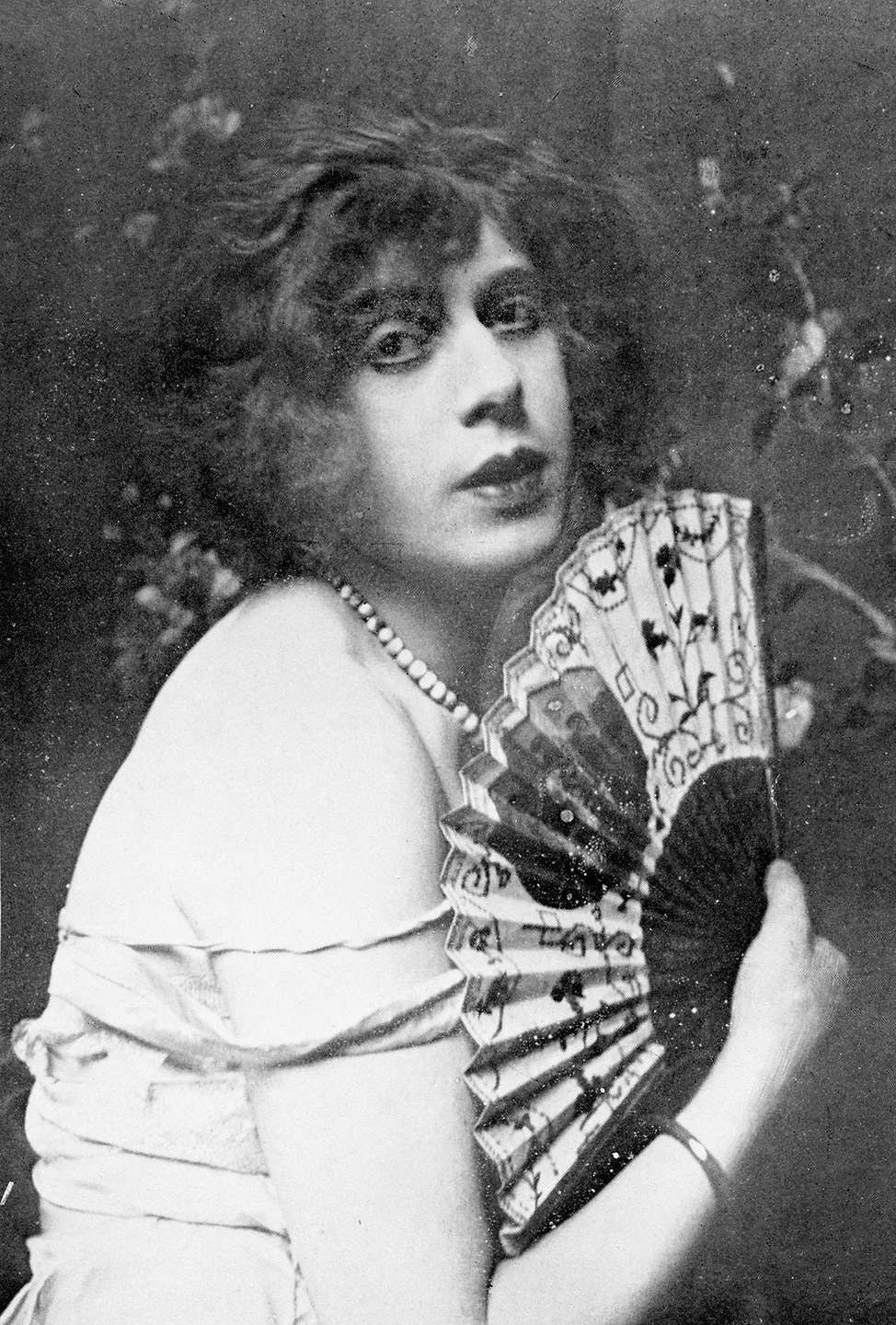Most Recent News


Popular News


A deep dive into the degeneracy of the Weimar Republic.

The degenerate nature of the Weimar Republic is talked about often by political dissidents, but little attention is often paid to the exact type of degeneration that the republic was experiencing. What exactly was the degeneracy of the Weimar republic and how does it relate to the American republic?
I think the exact type of degeneracy is important for dissidents to know. There is a reason the right needs to recognize it, because similar trends always emerge throughout history.
You may end up drawing some parallels to our own situation.
The focus of this article will be on the sexual-deviancy degeneration of the Weimar Republic, since it is the least well known.
We can start with the “Weimar Project” itself:
When many people think of LGBT history, they may look back to the Stonewall riots, or possibly the work of the Mattachine Society in the United States as the beginning of the fight for equality. However, a significant piece of western LGBT history began in Germany. First in the mid to late 1800s, as researchers studied transgender and homosexual identities through a scientific lens, then later in the period between the world wars as Germany’s LGBT community found more freedom to live out of the closet.
In this interwar period Germany had transitioned from an authoritarian monarchy into what we today call the Weimar Republic. It was a massive political and social revolution that allowed some trans and queer people to live authentically. The liberal Weimar Republic ended with right wing parties stirring up antisemitism, moral panic, fears of the Great Depression, the shame of having lost The Great War, and the threat of communist uprisings. But one of the great tragedies of the rise of the Nazis and the Holocaust was the nearly complete erasure of this brief gender and sexual revolution.
[…]
There are several flashback scenes in the TV show Transparent that depict transgender people living openly in interwar Germany. I was amazed there could have been fully out trans people so long ago and in a place and time I thought was extremely conservative. After some research, I became fascinated about this period in LGBT history. The most interesting part for me, as a transgender individual, was how far ahead of their time some people like Dr. Magnus Hirschfeld were in their understanding of trans identity. What made it more interesting was the fact that Hirschfeld’s works were among the first items burned in the infamous Nazi book burning rallies. It reminds us that backlashes against queer and trans people have reoccurred for generations.
The progress made at that time was largely erased and really only re-examined from a transgender perspective in the past couple of decades.
Within the Weimar Project, they mention the magazine: “The Third Sex” (transgenders).
This magazine is an important piece showcasing the true scale of the degeneration of the Weimar Republic:
A Lost Piece of Trans History
“A final moment of reluctance overcame me,” Hans Hannah Berg wrote, “as I stepped across the threshold of the house.” Dressed in a custom black dress, white gloves, and fine pearls, Hans Hannah looked impeccable. She cut a fine figure walking down the street, announced by a hint of perfume and the gentle jangling of bangles. But Hans Hannah was anxious: this was her first outing as a woman.
Hans Hannah wrote about the occasion for the inaugural issue of The Third Sex (Das 3. Geschlecht), likely the world’s first magazine devoted to trans issues. First published in Berlin in 1930, The Third Sex circulated in the final years of the Weimar Republic, Germany’s democratic experiment between the wars.
[…]
The Third Sex by the Bibliothek rosa Winkel revives lost voices from Germany’s queer past and recovers a remarkable piece of trans history.
Beginning in the nineteenth century, Germany was closely associated with homosexuality. The English spoke of the “German custom,” the French referred to the vice allemande, and Italians called gay men and women “Berlinese.” Queer people existed across Europe, of course, but German thinkers actively studied non-heteronormative sexualities and openly debated the rights of queer people, inaugurating the field of sexology. In the first decade of the twentieth century, more than a thousand works on homosexuality were published in German. Researchers from England to Japan cited German sexologists as experts and often published their own works in Germany before their home countries.
The Weimar Republic, the zenith of modernism, witnessed new social liberalization and experimentation. Fritz Lang premiered his Expressionist film Metropolis in 1927, Alfred Döblin published his dizzyingly innovative novel Berlin Alexanderplatz in 1929, and the following year Hannah Höch unveiled her Dadaist photomontage Marlene. And alongside reinventing traditional forms of artistic expression, Germans began interrogating gender roles and sexual identities. As the historian Clayton Whisnant observes, “Perhaps more than anywhere else, Weimar Germany became associated with experimentation in sexuality.” Berlin was the undisputed queer capital of Europe. By 1900, over fifty thousand gay men and lesbians lived there, and countless more visited, looking for friendship, love, and sex. By 1923, some hundred gay bars in Berlin catered to diverse groups: men and women, the old and the young, the affluent and the working class. Nightclubs like the Mikado, the Zauberflöte, and the Dorian Gray became international hot spots, and the city’s elaborate queer balls attracted worldwide attention. Associations offered opportunities for socializing and political organization. Crucially, relaxed rules of censorship allowed for the publication of dozens of pulpy gay novels, queer periodicals, and even personal ads. The British writer Christopher Isherwood, whose account of his thirties stay in Germany inspired the musical Cabaret, put it simply: “Berlin meant boys.” In 1928, the poet W. H. Auden similarly described the German capital as “the bugger’s daydream.” In her famous guide to the Berlin lesbian scene from the same year, Ruth Margarete Roellig concluded, “Here each one can find their own happiness, for they make a point of satisfying every taste.”
[…]
According to contemporary self-reports, some transvestites considered themselves homosexual, but most did not. Many wore clothes traditionally associated with the opposite sex only on special occasions. Others lived fully as a gender different from their sex at birth. A majority seemed interested in passing and adhering to expectations of respectability, while a minority sought to challenge the normative order. Gender affirmation surgeries were available—the first such operation was conducted in 1920 by, no surprise, a German doctor—but uncommon.
[…]
To foster a trans community, he produced The Third Sex.
[…]
Then, in January 1933, the Nazis seized power. Within months of Hitler’s appointment as chancellor, the Nazis shut down many of the gay, lesbian, and transvestite clubs. Queer magazines were shuttered and queer titles removed from bookstores as part of the Nazis’ “Campaign for a Clean Reich.” Anything deemed “filth” was banned from public view. In May of that year, Nazi students stormed Magnus Hirschfeld’s Institute for Sexual Science and ransacked his library of more than twelve thousand books. With help from storm troopers, they burned the books on the streets of Berlin, destroying much of the historical record of queer life before World War II.
Noticing a trend? The Weimar Republic demonstrated all kinds of degeneracy—modernism, sexology, gender oddities, queerness, transgenderism, gender affirmation surgeries, pedophilia, etc—that we are currently plagued with.
Our experience is not the first time this has occurred in history, nor will it be the last.
When these sources discuss the Nazis’ book burnings, these kinds of books were the main books they burnt.
See here:
6 MAY 1933: LOOTING OF THE INSTITUTE OF SEXOLOGY
On 6 May 1933, the Institute of Sexology, an academic foundation devoted to sexological research and the advocacy of homosexual rights, was broken into and occupied by Nazi-supporting youth. Several days later the entire contents of the library were removed and burned.
The institute was initially occupied by The German Student Union, who were a collective of Nazi-supporting youth. Several days later, on 10 May, the entire contents of the library were removed to Berlin’s Bebelplatz Square. That night, along with 20,000 other books across Germany, they were publicly burned in a symbolic attack by Nazi officials on their enemies.
Founded in 1919, the institute had been set up by Magnus Hirschfeld, a world-renowned expert in the emerging discipline of sexology. During its existence, thousands of patients were seen and treated, often for free. The Institute also achieved a global reputation for its pioneering work on transsexual understanding and calls for equality for homosexuals, transgender people and women. Hirschfield himself was a passionate advocate for homosexual rights and had long appealed for the repeal of Paragraph 175, the law that criminalised homosexuality in Germany.

In fact, this sexology institute was the very first place the German Student Union (the group that did the book burning) targeted.
It all started with the sexology institute:
The first large burning came on 6 May 1933. The German Student Union made an organised attack on Magnus Hirschfeld’s Institut für Sexualwissenschaft (roughly: Institute of Sex Research). Its library and archives of around 20,000 books and journals were publicly hauled out and burned in the street.
The German Student Union burned plenty of other books, but it’s of note that they started with the sexology books.
This sexual deviancy is coupled with the radical left/right split noticed in Weimar (national socialists and communists often battled in the streets), a rise in venereal diseases, widespread prostitution (including of youths), criminal gangs, a known reputation for drug dealing, degenerate art, rapid technological development, modernism, and a rapidly decaying social fabric. [1]
While nearly all of this was “illegal” (homosexuality, prostitution, etc), it was not enforced. There was tolerance for this behavior, despite the law.
Interestingly, the degeneracy of Weimar is not so far off from our own degeneracy. Some dissidents like to claim that we have it worse, but each ailment we have—Weimar had.
The parallels with Weimar are striking. Except instead of being quarantined in one nation-state, it is prolific across all of Western civilization. What that means for us in the long term is still uncertain.
The sad reality of the situation is that the entirety of Western civilization is closer to Weimar than most—on both the right and the left—would prefer to admit.
Read Next:
Understanding The Reprobate: Psychopath Reprobates
How Did We Get To Transgender Children?
If you enjoyed this article, bookmark the website and check back often for new content. New articles most weekdays.
You can also keep up with my writing by joining my monthly newsletter.
Help fight the censorship – Share this article!

(Learn More About The Dominion Newsletter Here)
Thank you for this article, I’m about to try and introduce the history of these ideas into my church, it’s past time to gain an understanding of the times.
Glad you enjoyed it. Good luck with the church intro—Spread the info as far and wide as you can. We need more people to be aware of the reality facing us (and them). May be the only way out of this mess.
Thank you for the information. Nice layout. Only the outcome would be different for me. Why ignore others and their feelings and put yourself out at the chosen people. Even Christ got the Pharizeers out of the church.